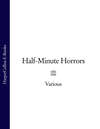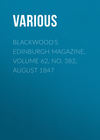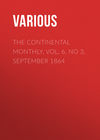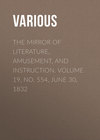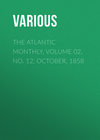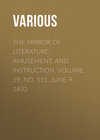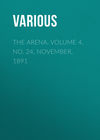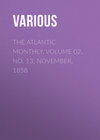Loe raamatut: «The Mirror of Literature, Amusement, and Instruction. Volume 10, No. 278, Supplementary Number (1828)», lehekülg 4
The annexed plan is reduced from the engraving which accompanied the Treasury Minute, January 19, 1827; from which the following are extracts:—
"The Earl of Liverpool and the Chancellor of the Exchequer lay before the Board a plan for building on the North and South sides of St. James's Park, (in addition to the buildings already sanctioned upon the site of Carlton Gardens;) and also for making some considerable alterations in the distribution of the intermediate ground, whereby the appearance of the park would be much improved, while a very material accommodation would be afforded to the public.
"They state, that they have received the King's commands to convey to the Board his Majesty's most gracious approbation of this proposal, and his pleasure that the necessary steps should be taken, with as little delay as possible, for carrying the measure into execution, so far as it respects the South side of the park, and the alteration of the ground comprised in it.
"My Lords perceive, that by this plan the whole of the space in St. James's Park, now laid out in grass, and from which the public are excluded, will be thrown open (with the exception of the parts to be planted) for the use of persons on foot."
The magnificent range of buildings intended to occupy the site of Carlton-house and gardens, and to extend from Spring Garden, Charing Cross on the east, to the Ordnance office, in Pall Mall, on the west, is already commenced in the last mentioned quarter. The substructure is a terrace, (containing the domestic offices,) of about 53 feet wide—its architecture of the Paestum Doric order surmounted by a balustrade. The order of the superstructure is Corinthian. In the centre of the range will be a fountain formed of the eight columns of the portico of Carlton-house, with eight additional columns on the same model. The basement story of all the houses is to be supplied with water by the overflow of this fountain and jets.
Our third Engraving represents the Grand Lodge Entrance to the New Palace, and resembles the arch in the front of the palace. The frieze of this gateway or arch, which is said to possess great merit, is still in the course of execution. Altogether this structure may be expected to form an approach of suitable splendour to the royal domain, whilst it bids fair to rank among the most interesting of the modern architectural embellishments of the metropolis.
Such is an outline of the improvements now in progress in St. James's Park and its vicinity. The palace may have fallen short of some expectations, but with all its imperfections, it will, when completed, be a pile of immense magnitude, with much of the grandeur and magnificence appertaining to regal splendour. His majesty will reside there when in his capital, and it is not an indifferent trait to observe, that it will not be altogether strange to his eyes; for every mantle and movable piece of Carlton palace, which can be used in the palace in St. James's Park, has been, or is about to be, removed thither. Meanwhile, the recreation of the people is not unstudied in the new arrangements of the park; indeed, it appears to be with their illustrious originator a primary consideration, as will be seen on reference to the treasury minute. Hence all loyal and grateful subjects may join in the song of olden time:
God prosper long our noble king,
Our lives and safeties all.
Arcana of Science
CAPTAIN PARRY'S EXPEDITION
(Abridged from the Literary Gazette.)
On Saturday, September 29th, Captain Parry from his Arctic, and Captain Franklin from his North-American expedition, arrived at the Admiralty within half an hour of each other!3
Captain Parry may himself be taken as a specimen of the health of his crew; he looks as well as when he set out on his bold undertaking.
The sum of the intelligence which has transpired is, that the Hecla having arrived at Hamerfest, took in the rein-deer for dragging the boats, snow-shoes, &c. for the journey over the ice. Having reached the coast of Spitzbergen, a heavy gale drove the ship among packed ice, where she was entangled for several weeks, to the 6th of June. Here the first effort to proceed in the manner projected was tried on two boats commanded by Captain Parry and Lieut. Ross; but the ice broke up, and it was speedily relinquished. The Hecla then wrought to the north as far as Seven Islands, where finding no harbour, she put back. By the 19th of June, however, having cut through a formidable barrier, to the Wratskel of Van Henloopen, a second attempt to get forward in the ice-boats was strenuously made. Unfortunately the ice was what is called rotten, and so irregular as to render success impossible. Nothing could exceed the fatigues and difficulties of transport; the boats had to be loaded and unloaded many times in the course of a few hours; and no field-ice was met with, to any extent, over which they might glide on their way. The party at last attained the latitude of 82 deg., and three quarters N.; or to between four and five hundred miles of the Pole. Heavy rains prevailed, and the ice over which they were travelling so laboriously towards the north, was itself drifting more rapidly to the south than the distances which they could accomplish. Thus, the last three days having been spent in this disheartening and fruitless toil,—half the provisions being exhausted,—some of the men falling sick, and being reported unfit for exertion,—the scurvy threatening them,—and no hope of any favourable change remaining—our brave countrymen were compelled to abandon their impracticable design. They accordingly returned to the Hecla, and on the 24th of September put into Longhope, in the Orkneys, without having experienced any loss by death. The whole period occupied in these exertions on the ice is stated to have been sixty-one days.
The highest latitude to which the Hecla reached was 81 deg. 6 min. believed to be the farthest north that ever a ship made her way; so that all that was made in the boats was 1 deg. 39 min. At the farthest point north, no barrier of ice was seen, so that the idea of such a barrier always existing may now be dismissed. The ice found by the present expedition was of a very chaotic form. For about a mile, perhaps, it might be tolerably smooth; but at every interval huge ridges were crushed up by the action of tides and currents. No sooner was this obstacle over, and one of these rugged and precipitous masses overcome, than another appeared. There was plenty of fresh water on the surface, but towards the end of the attempt, when the rains fell, the ridges separated, and between them the salt sea flowed like so many canals. It was found impossible to make any use of the rein-deer in dragging the boats; and as there were no means of feeding dogs (as once proposed,) the whole work was performed by personal labour. Officers and men, twenty-eight in number, were alike harnessed to the tackle, and wrought in common at the exhausting toil. Their time for stalling in the morning (their morning being the beginning of the night,) was chosen when the light was least injurious to the eyes; for though the sun shone upon them during the whole period, and there was no darkness, yet when that luminary was lowest in the horizon, the reflection from the bright white surface of snow was more endurable. They could not, however, bear up under the fatigue. During their whole march they were soaking wet to the knees, and benumbed by a temperature always at or near the freezing point. At the close of twelve or fourteen hours thus occupied, when they came to seek rest by lying down, the change of their wet for dry stockings and fur boots caused such a reaction, that the tingling and smart were insufferable.
"Quarter-day you'll have him back,With his volume in his pack;" And lo! on quarter-day, the 29th of September, did Captain Parry make his appearance at the Admiralty!!











